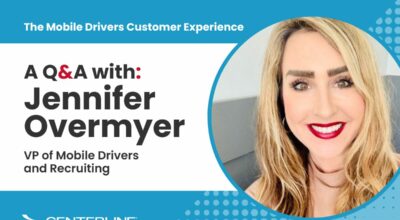 Article
Article
The Mobile Drivers Customer Experience: A Q&A with Jennifer Overmyer, VP of Mobile Drivers and Recruiting
We spoke with Jennifer Overmyer, VP of Mobile Drivers and Recruiting, to learn more about what customers should know about Mobile and how our team brings exceptional experiences to each assignment